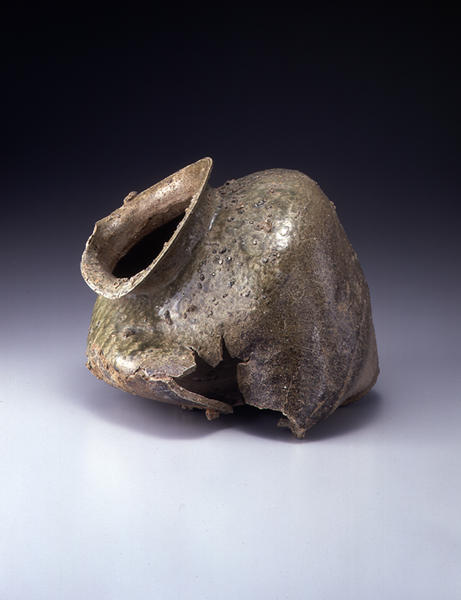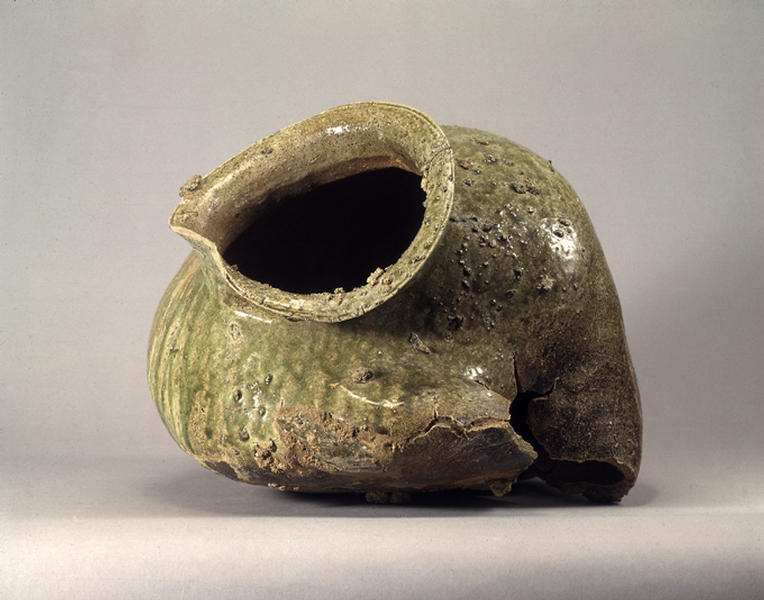常滑割壺
- 愛知県・常滑窯
- 平安時代
- 12c
- 自然釉焼締陶製
- H-29 D-37 W-35
解説(春の玉手箱)
薄く鋭さのある口辺と肩の張り方に、平安時代後期の常滑壺の特徴が表れている。おそらく経筒の外容器として作られたものであろう。この壺の場合は、窯内で高温で焼かれるうちに焔と自重でこのように歪んでしまった。この時期の常滑壺には端正なものが多いが、本作も元々はそのように品格のある姿であるだけに、ドゥとくずおれたと言う表現が似つかわしい。偶発的な自然現象が生んだ佗びのある姿である。
Catalogue Entry
This jar reveals the characteristics of late Heian period Tokoname jars, namely its sharp, thin rim and swelling shoulders. This jar was probably created as an outer container for a sutra container. Here the high temperatures in the kiln created strong winds in the kiln which, combined with the weight of the jar itself, caused this warped form. While there are many properly formed Tokoname jars of this period, this seems to be a perfect example of a noble form fallen all in a heap. This jar's misfortune created an unexpectedly natural shape that suits the austere wabi aesthetic.

